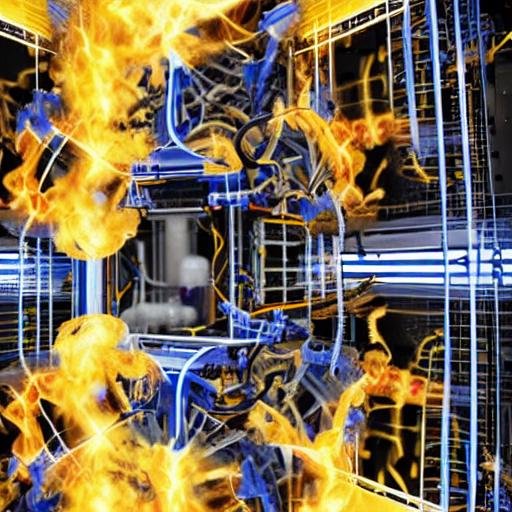The week before its successful experiment on December 5, Lawrence Livermore National Laboratory’s machine-learning models foresaw the historic achievement of fusion ignition.
The design team for the National Ignition Facility sent the experimental plan to the Cognitive Simulation (CogSim) machine-learning team for analysis, and it discovered that the fusion reactions that resulted would probably produce more energy than was required to initiate the process, leading to ignition.
Three football field-sized LLNL’s laser-based inertial confinement fusion research device fired 192 laser beams, delivering 2.05 megajoules of ultraviolet energy to a nearly round diamond fuel capsule, sparking 3.15 megajoules of fusion ignition for the first time in a laboratory during the most recent experiment. Having nuclear testing banned strengthens American energy independence and national security, and CogSim machine-learning models helped make sure the experiment didn’t fall into the same traps it did the year before.
LLNL Director Kim Budil stated during a press conference at the Department of Energy on Tuesday that last week their pre-shot predictions, improved by machine learning and the wealth of data they have collected, indicated that they had a better than 50% chance of exceeding the target gain of 1.
The NIF design team develops designs that will achieve the extreme conditions necessary for fusion ignition by comparing them to complex plasma physics simulations and analytical models against experimental data gathered over 60 years. The most recent experiment reached temperatures of 150 million degrees and pressures two times greater than those of the Sun.
Thousands of machine-learning simulations of an experimental design could be run in the lead-up using CogSim.
According to Annie Kritcher, principal designer, they have made quite a bit of progress in our machine-learning models to kind of tie together their complex radiation hydrodynamics simulations of the experimental data and learning.
However, the NIF experiment on August 8, 2021 crossed the ignition threshold, and the experiment in September opened the door for a new laser capability. For the most recent experiment, the design team utilized conventional techniques and limited machine learning to prediction-making.
The design team used improved models to increase the symmetry of the implosion by transferring more energy between laser beams in the second half and adjusting the first half of the pulse in order to thicken the fuel capsule for this experiment in order to increase the burn rate and increase the margin of success.
Although she referred to capsule defects—which are more difficult to model and predict—as the experiment’s “main driver” of performance, Kritcher credited those changes for the experiment’s success. Although the diamond capsule is 100 times smoother than a mirror, defects must be seen, measured, and counted using X-ray tomography, creating a large amount of data that software can now help analyze.
Future experiments should perform better because the robust capsule used in the most recent experiment was not the best choice, according to Michael Stadermann, program manager for Target Fabrication.
The NIF is a scientific demonstration facility, not an optimized one. Firing the laser required an additional 300 megajoules of energy to be drawn from the power grid.
Director of the LLNL Weapons, Physics, and Design program Mark Herrmann stated, “The laser wasn’t designed to be efficient.” The laser was created to provide us with the maximum amount of energy to enable these extraordinary circumstances.
The NIF has been around for more than 20 years, and some of its technology is from the 1980s.
Federal officials are confident that the United States can achieve President Biden’s goal of a commercial fusion reactor within the decade thanks to new laser architectures, target fabrication techniques, materials, computation and simulations, and machine learning.
In a public-private partnership centered on fusion pilot power plant designs, DOE invested $50 million in September, but Budil claimed that without “concerted effort and investment” on the technology side, such a plant is probably still four decades away.
Last year, the private sector spent $3 billion on fusion research, and DOE is working with the White House Office of Science and Technology Policy to develop a plan for commercial fusion that would produce zero-carbon energy for use in heavy industry, cars, homes, and other buildings.
To its credit, the Biden administration put forth the largest R&D budget in American history, and recent investments made it possible for LLNL’s most recent accomplishment.
According to OSTP Director Arati Prabhakar, she thinks this is an amazing example of the power of America’s research and development enterprise.













